Related Research Articles

Edward Frederic Benson was an English novelist, biographer, memoirist, historian and short story writer.

That Hideous Strength: A Modern Fairy-Tale for Grown-Ups is a 1945 novel by C. S. Lewis, the final book in Lewis's theological science fiction Space Trilogy. The events of this novel follow those of Out of the Silent Planet and Perelandra and once again feature the philologist Elwin Ransom. Yet unlike the principal events of those two novels, the story takes place on Earth rather than elsewhere in the Solar System. The story involves an ostensibly scientific institute, the N.I.C.E., which is a front for sinister supernatural forces.
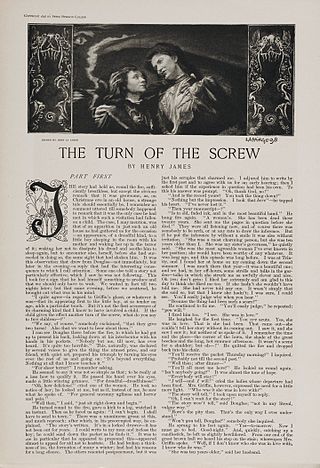
The Turn of the Screw is an 1898 horror novella by Henry James which first appeared in serial format in Collier's Weekly. In October 1898, it was collected in The Two Magics, published by Macmillan in New York City and Heinemann in London. The novella follows a governess who, caring for two children at a remote country house, becomes convinced that they are haunted. The Turn of the Screw is considered a work of both Gothic and horror fiction.
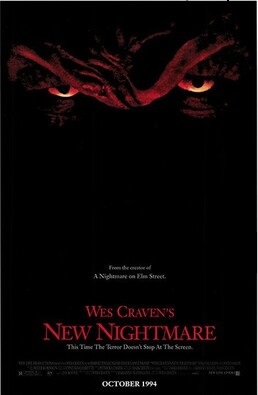
Wes Craven's New Nightmare is a 1994 American meta supernatural horror film written and directed by Wes Craven, creator of 1984's A Nightmare on Elm Street. A standalone film and the seventh installment in the A Nightmare on Elm Street franchise, it is not part of the same continuity as previous films, instead portraying Freddy Krueger as a fictional movie villain who invades the real world and haunts the cast and crew involved in the making of the films about him. In the film, Freddy is depicted as closer to what Craven originally intended, being much more menacing and less comical, with an updated attire and appearance.

George Oliver Onions, who published under the name Oliver Onions, was an English writer of short stories and novels. He wrote in various genres, but is perhaps best remembered for his ghost stories, notably the collection Widdershins and the widely anthologized novella "The Beckoning Fair One". He was married to the novelist Berta Ruck.
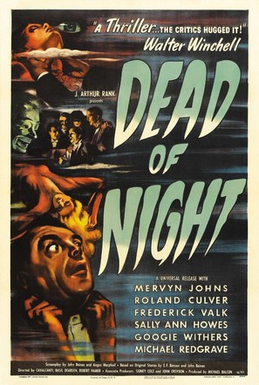
Dead of Night is a 1945 black and white British anthology supernatural horror film, made by Ealing Studios. The individual segments were directed by Alberto Cavalcanti, Charles Crichton, Basil Dearden and Robert Hamer. It stars Mervyn Johns, Googie Withers, Sally Ann Howes and Michael Redgrave. The film is best remembered for the concluding story featuring Redgrave and an insane ventriloquist's malevolent dummy.

Fear in the Night is an American 1947 film noir crime film directed by Maxwell Shane, starring Paul Kelly and DeForest Kelley. It is based on the Cornell Woolrich story "And So to Death". Woolrich is credited under pen name William Irish. The film was remade by the same director in 1956 with the title Nightmare this time starring Edward G. Robinson playing the cop and Kevin McCarthy.

The Adventure of the Christmas Pudding and a Selection of Entrées is a short story collection written by Agatha Christie and first published in the UK by the Collins Crime Club on 24 October 1960. It is the only Christie first edition published in the UK that contains stories with both Hercule Poirot and Miss Marple, the writer's two most famous detectives. It retailed in the UK for twelve shillings and sixpence (12/6) and comprises six cases. It was not published in the US although the stories it contains were published in other volumes there.
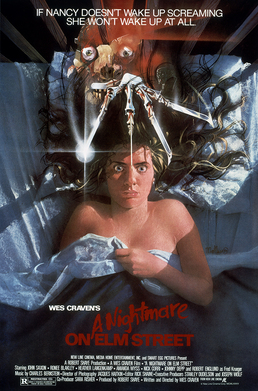
A Nightmare on Elm Street is a 1984 American supernatural slasher film written and directed by Wes Craven and produced by Robert Shaye. It is the first installment in the A Nightmare on Elm Street franchise and stars Heather Langenkamp, John Saxon, Ronee Blakley, Robert Englund as Freddy Krueger, and Johnny Depp in his film debut. The film's plot concerns a group of teenagers who are targeted by Krueger, an undead child killer who can murder people through their dreams, as retribution against their parents who burned him alive.

The Nightmare is a 1781 oil painting by Swiss artist Henry Fuseli. It shows a woman in deep sleep with her arms thrown below her, and with a demonic and ape-like incubus crouched on her chest. The painting's dreamlike and haunting erotic evocation of infatuation and obsession was a huge popular success.

Graham Masterton is a British author known primarily for horror fiction. Originally editor of Mayfair and the British edition of Penthouse, his debut novel, The Manitou, was published in 1976. This novel was adapted in 1978 for the film The Manitou. His 1978 novel Charnel House and 1983 novel Tengu garnered positive critical reception, the former receiving a Special Edgar Award by the Mystery Writers of America and the latter being awarded with a silver medal by the West Coast Review of Books. Masterton was also the editor of Scare Care, a horror anthology published for the benefit of abused children in Europe and the United States.

Manhandled is a 1949 American film noir crime film directed by Lewis R. Foster and starring Dorothy Lamour, Sterling Hayden and Dan Duryea. It is based on the 1945 novel The Man Who Stole a Dream by L. S. Goldsmith.

SpongeBob SquarePants: Creature from the Krusty Krab is an action-adventure platform game released for Microsoft Windows, Game Boy Advance, GameCube, PlayStation 2, Nintendo DS and Wii by THQ. An Xbox version may have been planned at some point, but was cancelled for unknown reasons. The PS2, GameCube, and Wii versions are all ports of the same game developed by Blitz Games, while the Game Boy Advance, Nintendo DS, and PC versions were separate games developed by WayForward Technologies and AWE Games respectively. It is based on the Nickelodeon animated sitcom SpongeBob SquarePants, and stars the title character, his best friend Patrick Star and their enemy Plankton as they journey to nine different worlds, supposedly inside the dreams of the characters. The Wii version was a North American launch title. It is also the first SpongeBob game released in Japan, but was released under the title SpongeBob, to mark it as the first video game in the SpongeBob series to have a Japanese release. The PC version of the game is titled SpongeBob SquarePants: Nighty Nightmare.

Wieland: or, The Transformation: An American Tale, usually simply called Wieland, is the first major work by Charles Brockden Brown. First published in 1798, it distinguishes the true beginning of his career as a writer. Wieland is sometimes considered the first American Gothic novel. Wieland is often categorized under several sub-genres including gothic fiction, horror fiction, psychological fiction and epistolary fiction, which are listed at Project Gutenberg. Major themes include religious fanaticism, sensationalist psychology, and voice and perception.

Dreams That Money Can Buy is a 1947 experimental feature color film written, produced, and directed by surrealist artist and dada film-theorist Hans Richter.
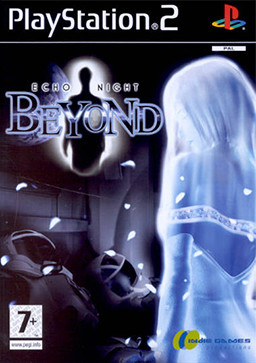
Echo Night: Beyond, known in Japan as Nebula: Echo Night is a 2004 survival horror adventure video game developed by FromSoftware for the PlayStation 2 console. Agetec published the game in North America, with the European release, by Indie Games, following in August 2005. It is the third game in the Echo Night series. While it shares common elements with Echo Night and Echo Night 2: The Lord of Nightmares, Beyond takes place in its own timeline.
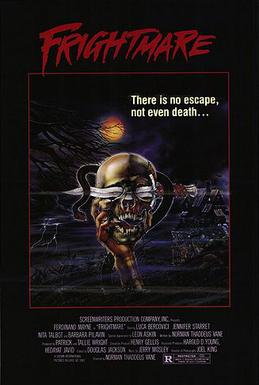
Frightmare is a 1983 American supernatural slasher film written and directed by Norman Thaddeus Vane. It stars Ferdy Mayne, Luca Bercovici, Jennifer Starrett, Nita Talbot and Barbara Pilavin, along with Jeffrey Combs in his horror film acting debut. The film's plot follows a group of drama students who decide to kidnap the corpse of a recently deceased horror movie star. By disrupting his tomb, they unwittingly release an ancient black magic that begins consuming them one by one.

"The Doctor and the Doctor's Wife" is a short story by Ernest Hemingway, published in the 1925 New York edition of In Our Time, by Boni & Liveright. The story is the second in the collection to feature Nick Adams, Hemingway's autobiographical alter ego. "The Doctor and the Doctor's Wife" follows "Indian Camp" in the collection, includes elements of the same style and themes, yet is written in counterpoint to the first story.

The Little Engine That Could is a 2011 American direct-to-video animated adventure film based on the 1930 story by Watty Piper. The film stars the voices of Alyson Stoner, Whoopi Goldberg, Corbin Bleu, Jodi Benson, Patrick Warburton and Jamie Lee Curtis.
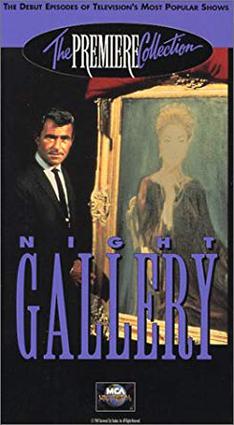
Night Gallery is a 1969 American made-for-television anthology supernatural horror film starring Joan Crawford, Roddy McDowall and Richard Kiley. Directed by Boris Sagal, Steven Spielberg and Barry Shear, the film consists of three supernatural tales that served as the pilot for the anthology television series of the same name, written and hosted by Rod Serling. Serling garnered the Edgar Award for Best TV Episode for this effort. The film originally premiered on NBC on November 8, 1969.
References
- ↑ Dobson, Eleanor (2022). "Occult psychology: dream, trance and telepathy". Victorian Alchemy: Science, magic and ancient Egypt,. UCL Press. pp. 177–230. doi:10.2307/j.ctv2qnx59x.9.
- ↑ Summers, Montague (July 1918). "Reviewed Work(s): The Supernatural in Modern English Fiction by Dorothy Scarborough". The Modern Language Review . 13 (3): 346–351. JSTOR 3714247.